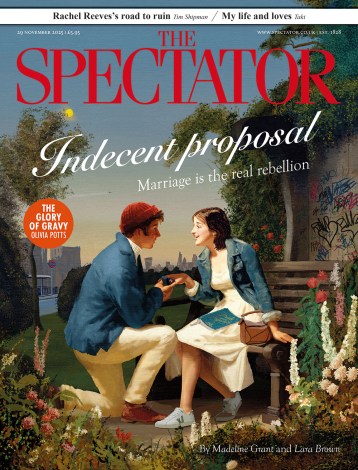
Jean-François Millet (1814-75). One Room. 14 items. Eight paintings. Six drawings and sketches. Modest, interesting. No masterpieces. The show appeals to the contemporary English preference for the unassuming, the humble, the unpretentious.
Take ‘The Wood Sawyers’ (oil on canvas, 1850-2). Two figures are sawing a tree trunk with a long two-man bucking saw. Two thick sections have already been cut and the sawyers are busy with a third. The simplified trunk is like a salami, the bark corresponding to the floury skin. The main foreground figure with his blue rump has his foot braced against the trunk and commands our immediate attention. You can see the folds of flesh gathered at the back of his neck as he looks up from the task towards his fellow worker. His companion has hard-working hunched shoulders and a pair of big straining hands slightly overlapping. In the background, there is a figure in a reddish ochre shirt wielding an axe. He is left-handed.
Next to this painting is ‘Wood Choppers’ (c.1850, black chalk and watercolour on paper). One man is tying a bundle held fast by his foot. His braces are crossed just above his waist. A second figure is chopping wood on a tree stump. A third person, virtually unreadable, is adding to a heap of stacked branches. It is efficient but not exceptional. Close by, ‘Two Men Sawing and Splitting Wood’ (c.1850-51, black chalk on laid paper). The main man is about to bring down a huge mallet the size of a two-litre beer mug to wallop a wedge in a piece of wood. The face is melancholy. Half-behind him, there is another allegedly sawing figure, who is difficult to make out. His saw looks more like a kitchen mandolin scaled up. You see the risk – monotony – as the curators supply us
with comparisons.
But Millet works his chosen narrow range, priming his pieces with authentic detail – white marsh irises at a pond’s edge, the cloth gaiters many of the men wear, the over-sleeves the women wear to protect their sleeves, the straw stuffed protectively into the wooden sabots. ‘The Winnower’ (c.1847-8, oil on canvas) is wearing green cloth knee guards tied in place with torn strips. His right ear is folded down like a calzone under pressure from his bandanna. His powerful right hand is gripping the wicker receptacle – which appears to be receiving, rather than riddling and tossing, a stream of clean grain like an agricultural Danae. More successful in this respect is ‘A Man Ploughing and Another Sowing’ (1849-52, black crayon on wove paper), where you can see the broadcast seed in mid-air. The sower’s head is pleasingly downcast.
The exhibition begins with another example, ‘The Sower’ (1847-8, oil on canvas), an earlier version of the more famous heroic 1850 version (not in the show). In the 1850 painting, the horizon is lowered and bisects the picture and the two oxen on the skyline are given a ploughman and a plough-share. The version shown has a more sombre palette and the sower is treading rather gingerly in dawn light. The pair of oxen are there, but without the plough, grazing.

The most famous painting here is ‘The Angelus’ (1859, oil on canvas), which reached record sales figures in its day. It depicts two peasants pausing to pray as they pick potatoes. To the left, a fork is stuck in the ground, to the right there is a wheelbarrow, loaded with two burlap sacks, one tied, the other turtle-necked. There is a basket of potatoes between the couple, whose heads are bowed. The man on the left is holding his doffed hat by the dints. The woman’s hands are clasped. The critic Théophile Silvestre wrote of the male figure: ‘He is one of those types more fearful than pious… The God he adores is one of the Rogations, Master of the sun, the wind, the rain, the hail, the tempest and lightning.’ Jehovah, in a word. There is absolutely no evidence for this interpretation. Millet began as a painter of nudes, but stopped when he heard two potential customers disparaging his efforts. His biographer airbrushes out this false start. He became known as a religious painter. Though he never attended Mass regularly as an adult, and was married in a civil ceremony, he told the parish priest at Gruchy that the Bible and the Psalms ‘are my breviary… it is there that I find all that I paint’. Hmm.
The painting itself supplies clues to Millet’s USP – a spiritual aesthetic. The catalogue tells us ‘both bodies are strongly outlined’. This isn’t quite accurate. They are silhouetted, true, but we can tell from the main female figure in ‘The Faggot Gatherers’ (c.1868-75) what an outlined figure looks like in Millet’s output. He rather favours a numinous figure, as if the pigment had a wool component, a sort of charismatic fuzz, a radiant vagueness which seems paradoxical given his basically drab palette. The features of his people are rudimentary, archetypal. The feel and finish are more like rough-cast than gloss paint – appropriately enough for the quasi-spiritual peasants who were his bread and butter.








Comments